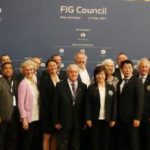Lausanne (SUI), FIG Office, May 10, 2017: GREENLIGHT INCLUSION: Meeting in Baku (AZE) last week, the FIG’s decision-making bodies gave their in-principle approval for the inclusion of a new FIG discipline based on obstacle course competitions.
Greenlight inclusion, Following its February decision regarding the development of a discipline along these lines, the FIG’s Executive Committee and Council – the annual legislative assembly of 44 delegates from five continents – approved the key stages for the discipline’s formal inclusion, with a view to organizing World Cup series in 2018 and 2019 and World Championships from 2020.
Sprint and Freestyle
The FIG expects to include two formats of competitive obstacle course events in the new discipline:
– “Obstacle Course Sprint” is an against-the-clock format.
-“Obstacle Course Freestyle” is based on performances that will be judged.
The courses for these competitions, while mainly artificial, are based on real-world shapes found in urban and natural environments.
The first event under the FIG’s auspices will take place on 28 May 2017 during the FISE in Montpellier (FRA). Serving as a model for a proposed urban cluster at the Tokyo Olympics and future Games, the 2017 FISE festival includes several other competitions, notably BMX freestyle, boulder climbing and roller skating under the patronage of the Union Cycliste Internationale (UCI), the International Federation of Sport Climbing (IFSC) and the Fédération Internationale de Roller Sports (FIRS), respectively.
Representatives from the International Olympic Committee (IOC) will be present to observe the new trends in view of the Tokyo Olympic Games.
For the organisation of these planned competitions and initiations, the FIG has partnered with the Mouvement International du Parkour, Freerunning et l’Art du déplacement via its President Charles Perrière (FRA), as well as with the APEX School of Movement (USA) and JUMP Freerun (NED).
The distinction between parkour and obstacle course competitions
Historically, obstacle courses are not an entirely new phenomenon. Military Gymnastics training in countries like France, Germany and Sweden during the 19th century included techniques for overcoming obstacles.
During the 1990s, David Belle (FRA) gave a new form to this practice of overcoming obstacles by founding parkour, which he defined as “this art of moving through both urban and natural environments, taking advantage of all the constructions and obstacles that were not originally created for this purpose.”
Made famous by the exploits of a group known as the Yamakasi, parkour served as an inspiration for the obstacle course competitions of today.
Throughout the inclusion process of the new discipline, the FIG is being supported by the Mouvement International du Parkour, Freerunning et l’Art du déplacement, established in 2014 by the cofounders of parkour to better lead the practice.
Before the Executive Committee’s first decision on the issue in February, FIG President Morinari Watanabe undertook a trip to Lisses in the Paris suburbs to meet the current president of the Mouvement, Charles Perrière.
In the place where parkour was born, President Watanabe was better able to grasp the non-competitive philosophy behind the creation of parkour and the vision defended by its participants.
“As a well-established international Olympic sport federation, the FIG has agreed to give its support to the development of a discipline that has generated real interest to the whole world,” emphasized Morinari Watanabe. “The FIG is doing so with the desire to respect the philosophy that drove the founders of parkour, and to empower them.”
“The collaboration between the Mouvement and the FIG aims to ensure there is a positive link between obstacle course competitions and the original practice of parkour, by definition a non-competitive physical activity. The appeal of one is able to lead to increased interest in the other, and vice versa,” said Charles Perrière.
The FIG itself is not solely focused on competitions. Through the discipline of Gymnastics for All, the FIG encourages all forms of Gymnastics, regardless of age, culture or ability level of participants.
The cooperation between the FIG and these various bodies comes even more naturally as several FIG national member federations, like the Royal Dutch Gymnastics Federation via JUMP Freerun, offer parkour activities, while some organise obstacle course competitions up to the national championship level. —- FIG



Leave a Reply
You must be logged in to post a comment.